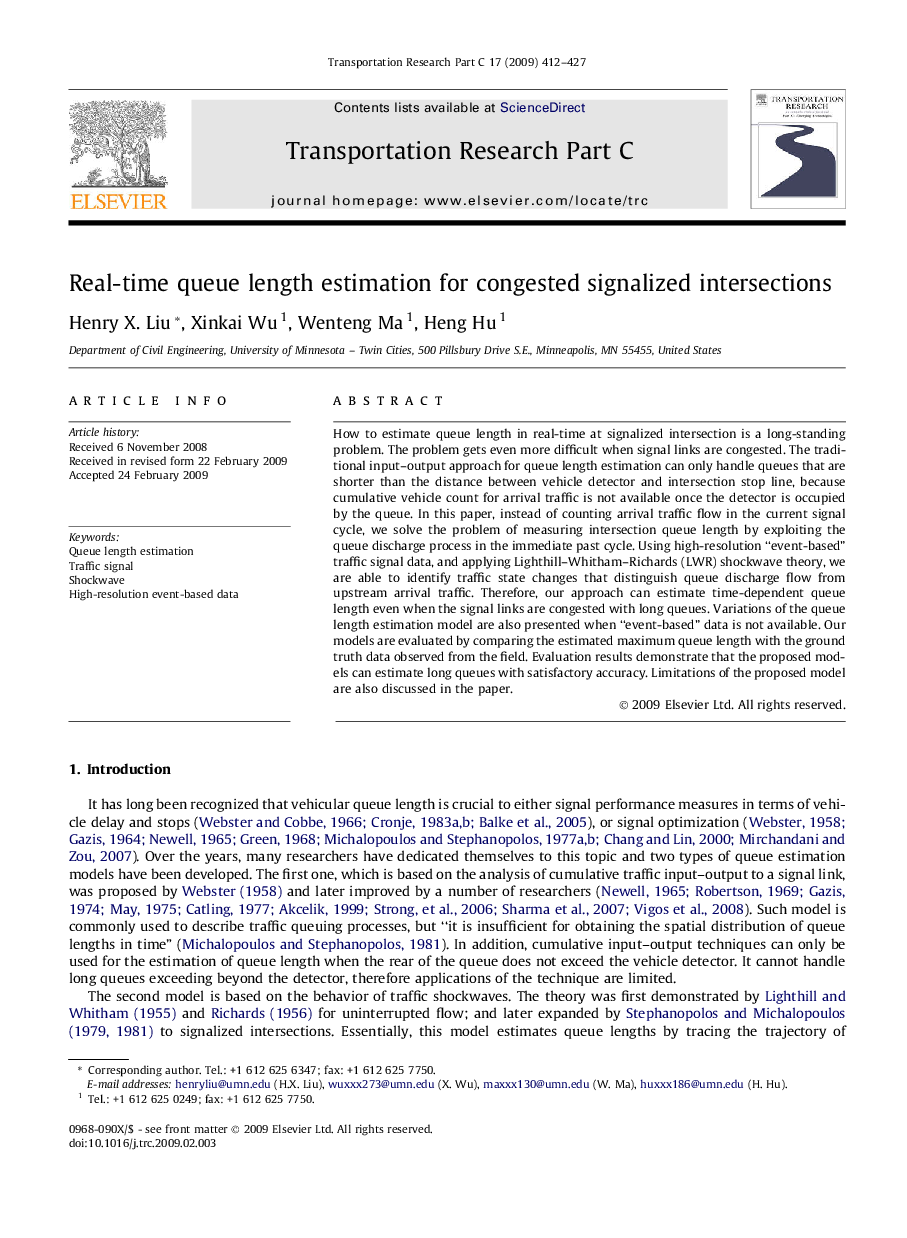| Article ID | Journal | Published Year | Pages | File Type |
|---|---|---|---|---|
| 526661 | Transportation Research Part C: Emerging Technologies | 2009 | 16 Pages |
How to estimate queue length in real-time at signalized intersection is a long-standing problem. The problem gets even more difficult when signal links are congested. The traditional input–output approach for queue length estimation can only handle queues that are shorter than the distance between vehicle detector and intersection stop line, because cumulative vehicle count for arrival traffic is not available once the detector is occupied by the queue. In this paper, instead of counting arrival traffic flow in the current signal cycle, we solve the problem of measuring intersection queue length by exploiting the queue discharge process in the immediate past cycle. Using high-resolution “event-based” traffic signal data, and applying Lighthill–Whitham–Richards (LWR) shockwave theory, we are able to identify traffic state changes that distinguish queue discharge flow from upstream arrival traffic. Therefore, our approach can estimate time-dependent queue length even when the signal links are congested with long queues. Variations of the queue length estimation model are also presented when “event-based” data is not available. Our models are evaluated by comparing the estimated maximum queue length with the ground truth data observed from the field. Evaluation results demonstrate that the proposed models can estimate long queues with satisfactory accuracy. Limitations of the proposed model are also discussed in the paper.
